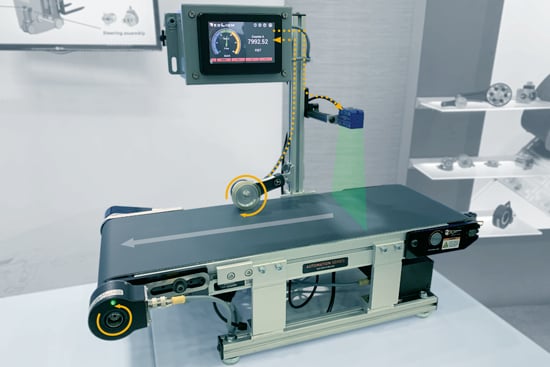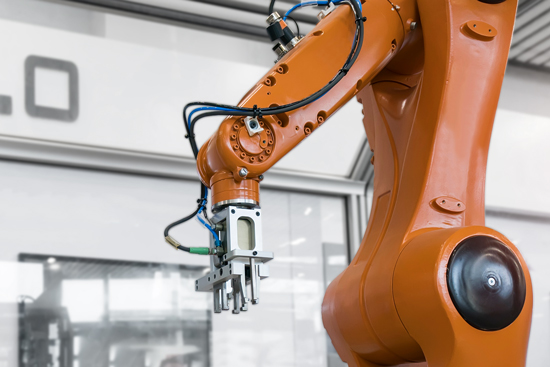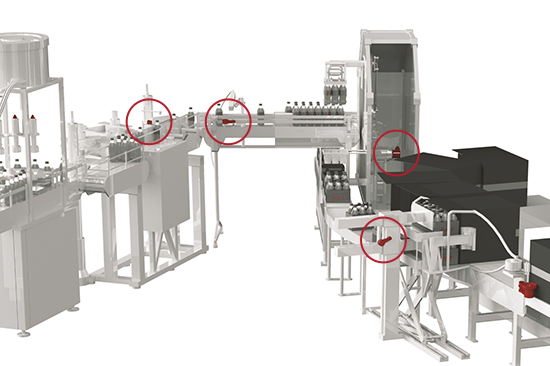Surface-mounted conveyor feedback
An effective means of obtaining conveyor feedback is to read directly from the belt itself, using a precision measuring wheel attached to a rotary incremental encoder. Traditionally, this setup would entail a shaft encoder, a torsion arm, a pivot point, a tension spring, and a measuring wheel. All-in-one solutions integrate these components into a single cost-effective device that is simple to install. Spring tension is recommended to avoid wheel slippage caused by belt motion, changes in speed or direction, belt seams, and belt contaminants. Spring tension also allows for mounting the encoder underneath the belt when there isn’t adequate clearance on the upper surface. For thinner belts, it’s recommended that the belt be supported by a roller where the measuring wheel meets the belt.
For conveyor feedback, the measuring wheel surface material should offer the combined attributes of grip and durability. For most continuous belt materials, a polyurethane wheel surface with 65-85 durometer meets the criteria. Measuring wheel size can be selected with an eye toward convenience and accuracy when calculating encoder resolution. Designers should also ensure that the frequency of the encoder signal does not exceed the input frequency limit of the receiving device. If the conveyor belt can rock side-to-side along the axis of linear travel, then a dual wheel solution should be considered. This setup keeps the wheel aligned with belt travel for accurate belt tracking.
Programmable encoders offer flexibility
Often, newly acquired end-of-line production equipment is installed alongside an existing conveyor. For the installer or integrator tasked with this project, calculating the correct encoder resolution may not be possible until an on-site visit, and even then, it may take some trial and error. In such situations, a programmable encoder allows the installer to test and adjust encoder counts on site. Likewise, programmable encoder resolution can help end-users when relocating labelers, printers, or inspection systems from one production line to another.






